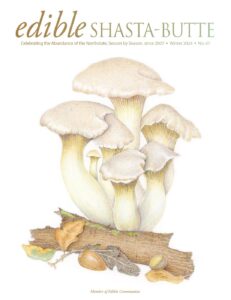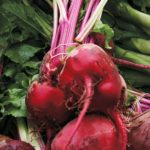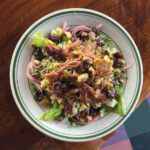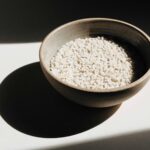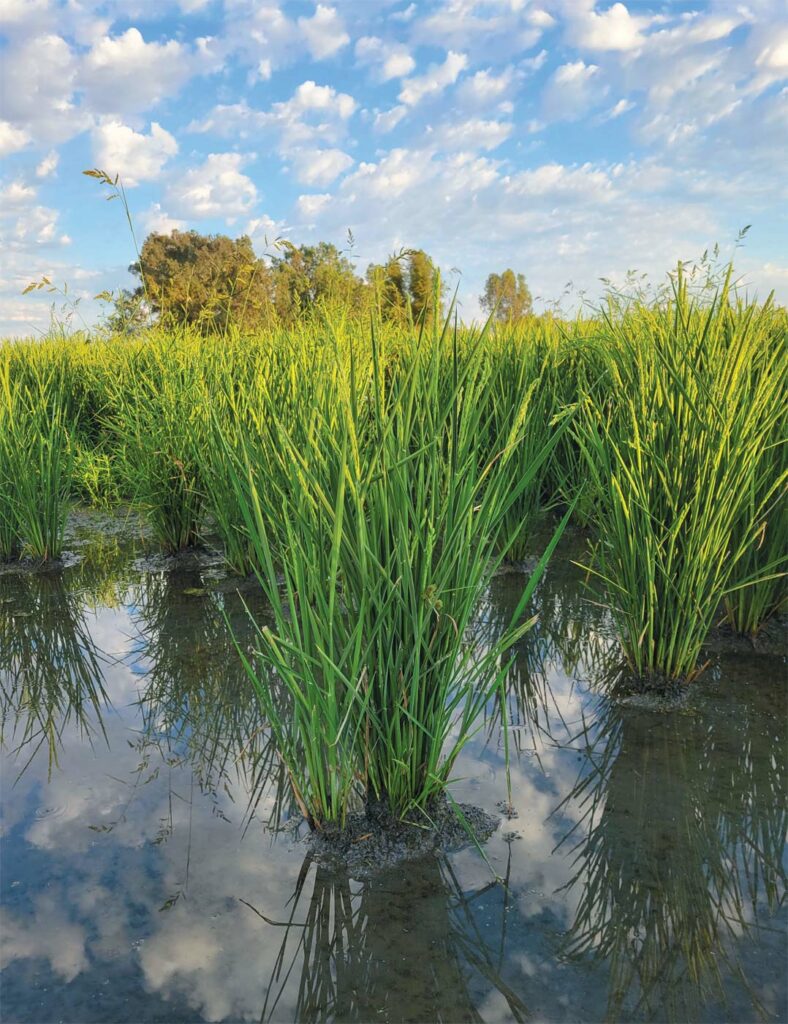
In summer, the rice fields turn a lush green that covers the valley, eventually turning golden as we guide the rice crop towards a bountiful harvest.
Happy Summer from Bruce and Christopher at Lopes Family Farms! Summer always excites us on our rice farm. We watch the endless landscape of brown fields transform before our eyes. They first become a serene lake reflecting breathtaking sunsets. Then, in summer, they turn a lush green that covers the valley, eventually turning golden as we guide the rice crop towards a bountiful harvest.
In the spring issue of this magazine, we started telling the story of our farm’s initiation into duck rice farming, of how we introduced a slew of ducks into our organic rice production, adopting a Japanese method designed to work with nature instead of against it. This method uses ducks to control weeds in the field. Rather than drowning weeds in 8–10 inches of water—the usual way rice outcompetes weeds in an organic field—ducks eat the weeds, and they require just 3–5 inches of water to paddle around and devour those weeds. That’s a lot of acre-feet of water saved! Plus, the duck poop provides fertilizer for the rice through the end of the season, when we harvest and sell both ducks and rice.
Those in the know, those few, call this method duck rice farming. There were moments that first year when we thought we would fail, but the stars aligned. We hope you enjoy the ride!
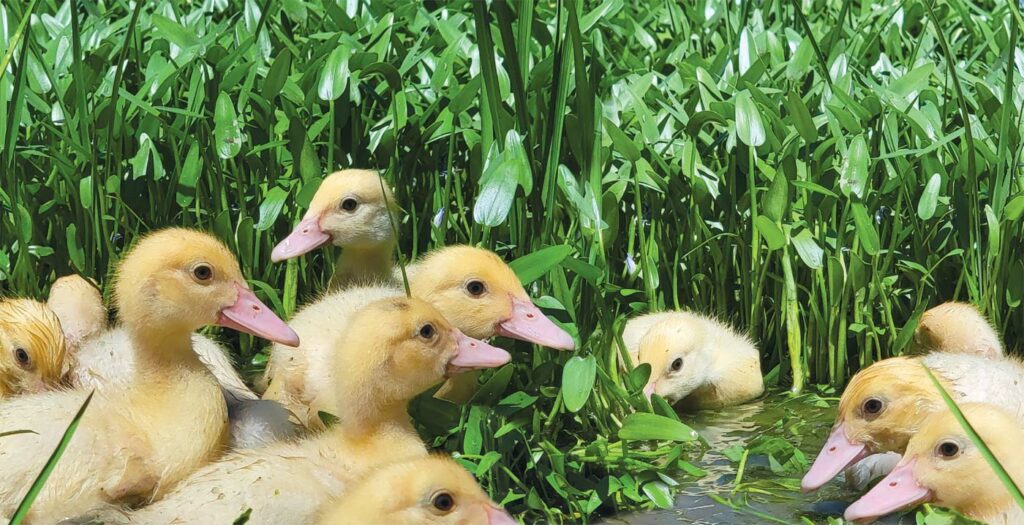
THE OLD MAN’S SON DESCRIBES A PRACTICE RUN
When we learned about duck rice farming, we decided to dedicate 15 of our 57 acres to that method and farm 41 acres as our normal organic rice fields. We had to learn to grow rice with ducks like they do in Japan. Instead of using airplanes to spread rice seed over flooded fields, the Japanese start the rice in trays in greenhouses. In the past, each rice plant from those mats would be hand transplanted into muddy rows, but fortunately, through some genius engineering, the Japanese created a machine to transplant the rice seedlings.
The learning curve was steep and the deadlines for planting were looming. Come May, we needed to make 1,600 trays of rice seedlings to plant our 15-acre field. In February, we embarked on a practice run growing rice in trays, using a machine that we had ordered from China. This machine propels multiple trays through an apparatus that loads soil, seedlings, and then again soil atop the seedlings. The fully loaded trays are deposited into a pool to stay moist until they reach the three-leaf stage, when they’re ready to transplant to the bigger field.
Our February practice run to learn how to operate the rice tray machine faced one small issue: the freezing cold! Rice doesn’t tolerate cold well. But, like other good, small farming operations, we found spare parts, MacGyvered a hoop house, and heated it using our ducks’ brooding lamps. Our hoop house worked great to germinate the seed—until the wind tried to rip it to pieces. Solution? We blocked the wind by parking an old RV alongside.
During our practice run, we learned to germinate the rice, use the tray making machine, and monitor the growth rate as the seedlings grew to 3 inches. By May, we were ready to scale to produce 1600 trays of rice seedlings, but we needed a 1-inch deep pool to keep all those trays of seedlings wet.
In 2022, due to the ongoing drought, our water district had allocated us no water. So, we devised an irrigation system to pump water through a PVC pipe, from our swimming pool over the canal and under the dirt road between the canal and the field, to attach to a drip system that we built. In that way, we created the shallow pool we needed to keep the trays of seedlings moist until we were ready to plant them.
The rice growing in the seed trays also needs nutrients, and managing those nutrients is a tricky process. As providence would have it, I stumbled across a blog attributed to Boundbrook Farm, in Vermont, the only duck rice farm in the States. I reached out and met Boundbrook’s farmer, Erik Andrus. The duck rice farming community is small but passionate about sharing knowledge. Erik taught me the nutrient tricks–and continued to mentor us in countless ways to our ultimate success.
We had to learn to grow rice with ducks like they do in Japan. Instead of using airplanes to spread rice seed over flooded fields, the Japanese grow the rice in trays in greenhouses and then transplant seedlings into the field.
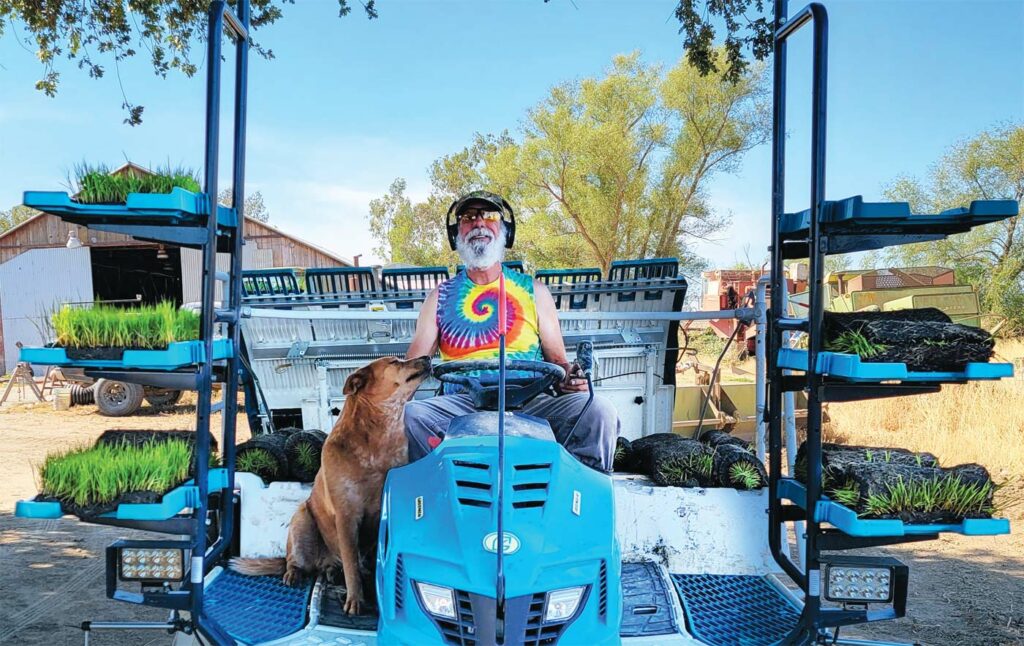
THE OLD MAN AND THE WELL: HOW WE GOT WATER WHERE WE NEEDED IT
I called last year a manifest party, my cousin calls it providence, because we saw so many amazing moments manifest just when we needed them. We felt as if we were “hanging ten while riding a 100-foot tsunami.” But our thoughts created what we needed, and what we needed arrived at the right moment, as if the universe pushed us along.
It started with the news that the drought was not going to end. I had foreseen the need for wells and put in for permits the year before. We got the last of them, as two weeks later the ongoing drought forced the county to end new well drilling.
Water became one of our greatest challenges as our deadline for planting loomed last spring. It was already late for planting, and we needed a motor to pump water from our new well. Covid had left electrical services backed up, so we couldn’t install an electric motor. Our funds were limited, but good fortune smiled upon us, or so we thought. A friend helped us find an old propane motor that could be fixed up for very cheap, but we wanted a professional to do the job. We called our neighbor Ben Ferreira, of Valley Wide Compression.
He agreed to do the job. Once he had the pump installed and running smoothly, with great excitement we were ready to pump water, just days before the deadline to fly on rice seed. We turned on the motor, then witnessed our worst nightmare: Water only dribbled out of the pipe. We had vastly overestimated the motor’s power. Fortunately, Ben had a motor to meet our needs and just barely within our budget. He ripped out the old motor and installed the new one that same day! Ben thought we might source propane from his friend, at EnviroPro, who also happened to live down the road. His friend’s ears must have been burning, because at that moment he phoned Ben, and we got a source for propane confirmed.
We were feeling strong now, but we woke up the next day to a blown rear main seal on our new motor. Ben responded in the way that earns his business five stars: He found a rear main seal and had the motor running that same day, on Memorial Day weekend! What a relief. Running the new motor for only two days flooded the entire 33-acre block for our organic rice production, just as we needed to fly on the seed! Now we turned our attention to the remaining acreage we had to flood.
Just when you think things are going to get easier, life’s thrown back into the wind. We thought we could use the water in our 33-acre block to irrigate our remaining 8 acres. That field in turn would be the source of water we needed for the 15 acres we designated for the duck rice. However, the land was so cracked from the drought that the ground was broken. I have photos that show gaping cracks 6 feet deep! On top of that, with no water allocated, none of our neighbors had flooded their fields, and the usual water table was gone. At first, we pumped water in, and the ground sucked it all up. When we finally got enough water into the 8 remaining acres allocated for our organic rice, we realized the slow pace meant we couldn’t flood the 15-acres we wanted for duck rice farming in time to plant it.
That was only the beginning of the struggle, though. The rice seed had been flown on to the 8 acres of organic rice, and it looked like weeds had the upper hand. Panic started to set in, but, as farmers do, we improvised. We abandoned the duck rice field we’d worked so hard to build and did the next best thing. We used the 8-acre field for duck rice!
Rice doesn’t tolerate cold well. But, like other good, small farming operations, we found spare parts, MacGyvered a hoop house, and heated it using our ducks’ brooding lamps.
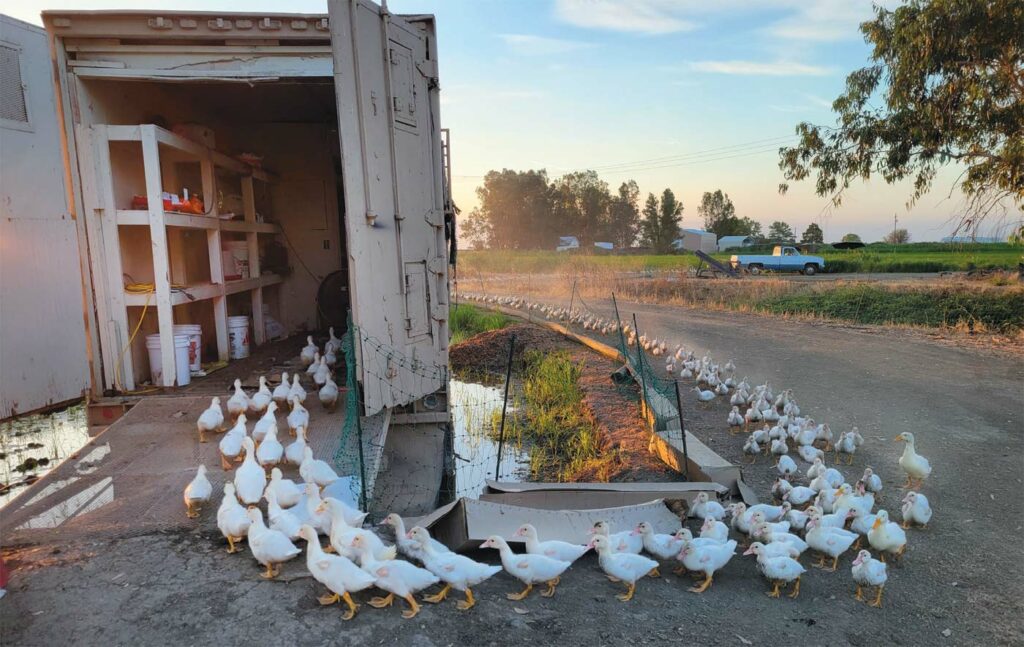
THE SON SPEAKS: FROM RICE TRAYS TO RICE FIELDS
The final step of the planting process for duck rice is transplanting the seedlings that grew in the rice trays. We rototilled the 8 acres full of water into a mud slurry, cleaning the field for the transplants so that we could use the rice transplanter to lay the plants into the soil evenly and smoothly. The transplanter spaces out rice seedlings so that our ducks can maneuver through the rice easily, gobbling up all the weeds. The ducks prefer a meal of tender weeds, rather than the thick and rough leaves of rice.
On the big day of transplanting, we gathered up our team of workers. Two people separated rice mats from their trays and rolled them like jelly rolls to stack on the transplanter. I helped load the jelly rolls onto the machine. My dad drove it. The dance was on!
Because we hadn’t prepared the 8 acres for the duck rice— as we had the bigger field we had to abandon—the field was not level, and we could not judge where deeper water hid the seedlings we had just transplanted. We often headed off into the distance, unaware of where we had just been. But we managed to catch ourselves before we had gone too far off course. The ducks wouldn’t care if rows were crooked, though, so we were fine. It took three full days in sweltering heat to transplant the 8 acres, but once it was done, we couldn’t have been more proud of what we had accomplished. Our first real duck rice planting was a success!
We sure felt one of the beauties of the duck rice farming method: We don’t always have all of the equipment or answers, so we have to go searching for them, and in the process, we build friendships and community.
THE OLD MAN AND THE DUCKS: FORMER ENEMIES FIND FRIENDSHIP
I used to be a firm believer that ducks are a rice farmer’s enemy. I should not have judged so harshly. But–I’d seen it–at the end of a season, if your rice goes down, as it does when the heads mature and grow heavy, and ducks invade your field, they destroy your crop in a matter of hours. It’s a sight to see! Ten acres of rice lie on the ground, and these ducks strip the head of rice with a swoop of their bills. They don’t even eat it all; they leave 80% of your crop lying on the ground. Those ducks are wild ducks! They come in autumn as the sun goes down and the moon goes up. I’ve seen wild ducks blacken the night sky during a full moon!
Our ducks’ new role in the field comes at a crucial time for organic farming, at the beginning of the season. At a time when the weeds are our worst enemy, the ducks are our best friends.
We ordered 320 Muscovy and 80 White Duclair ducks. Ducks are shipped express, and the post office phones at 6am to urge quick pick-up. We had the ducklings’ brooding tubs ready with heat lamps (they would spend their first week in the tubs), and we quickly brought them home and set them up in their duck shack. We fed them some duck salad to get their digestive system used to greens before they were released into the rice field. Our next task was to introduce them to the duck pond to learn to swim and forage. Weeds were established in the 8-acre duck rice field, and those weeds already towered over the ducklings!
I learned to coax my ducklings a whole hundred yards, down the ramp around the corner over the ditch, from the duck shack to the field, for their first morning meal. After breakfast, they lazed on the levee for the rest of the day. That’s when I discovered mealworms! Duck treats are what I call them. I would take a full pouch and drop mealworms along the way to the far end of the field, and once one duck saw the treats, the rest would follow.
For the first two weeks, I needed to stay out in the field with the ducks for a couple hours; otherwise, they would get spooked by a noise and run back to the levee. I figured I might as well help them take care of the weeds that were too big for them to handle, like the towering water grass. When they were old enough to eat on their own, I threw a big handful of mealworms off into the distance. Those treats landed among the growing crop, and when a duck found a mealworm on a weed, down the hatch went both mealworm and weed. That’s how the ducks learned to eliminate even towering weeds.
These ducklings sure had imprinted on me. I had to sneak off to my other work as the ducks chased their treats. When, after about an hour, they were done eating, they would be back up on the levee relaxing. So, throughout the day for the next couple weeks, I would have to take them out again and repeat the mealworm process, until I felt confident, they knew what they were doing. When the day was over, my ducks would see me coming and get all excited, knowing their work was done and they could head back to their roost. Once they went inside all happy, I shut the door to protect them for the night. As much work as it was, I looked forward to spending the morning sunrises and evening sunsets with my ducks each day. Imprinting works both ways!
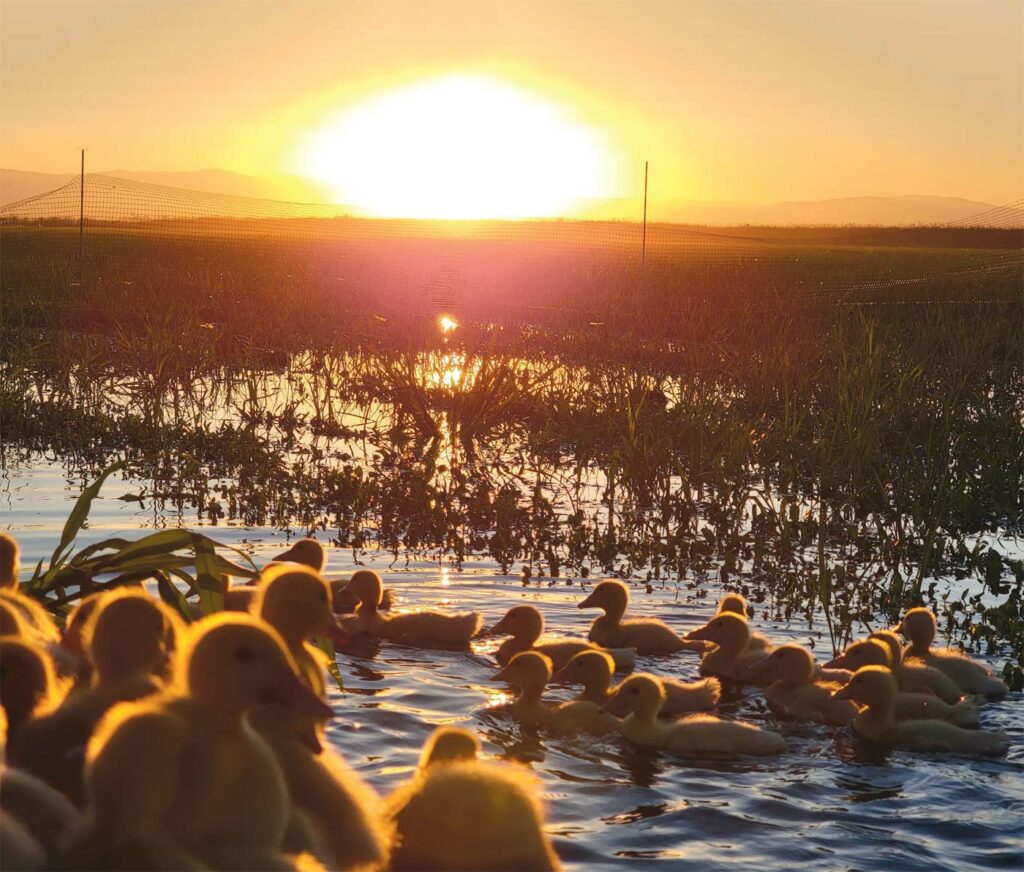
THE OLD MAN AND THE SON SPEAK
The first seasons getting the rice and ducks together for duck rice farming were full of crises at every turn, but we pushed forward against all odds, failing forward to success. We sure felt one of the beauties of the duck rice farming method: We don’t always have all of the equipment or answers, so we have to go searching for them, and in the process, we build friendships and community. In the end, even though they were outnumbered, the ducks miraculously cleared the weeds in the field, and the duck rice method was a resounding success!
Fast forward to this year, we took a booth at our first farmers market at Stoble’s Coffee in Chico and brought our chef extraordinaire, Preston Farris. Preston created an apple reduction to put on top of our cooked rice, and, yes, it was over the top. The expressions on people’s faces when they ate it brought tears of happiness to our eyes, and we realized at that time it was all worth the effort!
Big shout out to all who contributed to our success: Our friend James, without him this would not have been possible; Sullivan’s Well Drilling; Valley Wide Compression; EnviroPro Propane; Davies Oil Company, Alderson’s Ranch Supply; North State Electrical and Pump; John Abbott Welding Service; Will Martin, Cody Hansen, and Zack Weathers.

Bruce and Christopher Lopes raise organic ducks and rice on their farm in Princeton, which has been in the family for 113 years. This is the first in a four-part series and introduces readers to the family farm and its latest innovation, ducks ‘n’ rice. The Lopes’ ducks are featured on the menu of Grana and The Winchester Goose in Chico. Once milled this spring, their rice will join the ducks on Grana’s menu.



